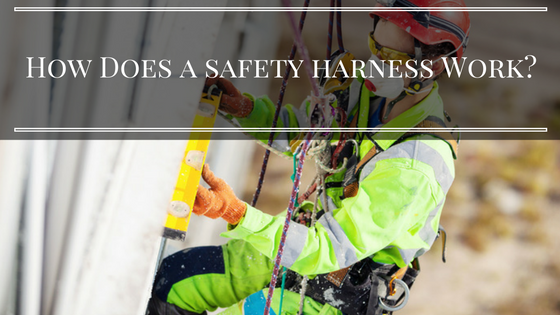
A safety harness is likely the only thing standing between a worker remaining on the job and enduring months or years of rehabilitation. In some cases, death ends up being the tragic consequence. That means that a business or other entity has to know the answer to a simple question: how does a safety harness work?
Key Parts of the Safety Harness
The harness has a multitude of buckles and straps on it that need to be used in order to receive the benefits of its use. This should provide a feeling that allows for enough movement so that the push to protect the employee doesn’t compromise their ability to actually do the job.
The buckles and straps are strategically placed in body areas that will support the wearer’s weight. These generally focus on key areas of the body, such as the shoulders, chest, the pelvis and the meatier part of an individual’s upper thighs. Doing this allows for the harness to meet OSHA standards that dictate that the arresting force maximum for any individual fall arrest system doesn’t exceed 1,800 pounds.
By accomplishing this, it protects more delicate areas for the worker that are situated in the neck area, the stomach region and the groin. In addition, the safety harness will end up absorbing the force of a fall.
Quick Removal is Vital for a Safety Harness
Being able to answer the question how does a safety harness work not only means addressing the process of strapping in and buckling up employees, but taking into the consideration another key aspect. That’s the simple fact that once a harness has delivered on its promise to protect an employee, that individual needs to be removed from the equipment as quickly as possible.
The Dangers of Suspension Trauma
The reason stems from the issue of suspension trauma, in which a worker is left dangling from above. Technically, they’ve been protected, yet the tight and protective nature of the fit of the harness can end up cutting off the individual’s circulation. A general rule of thumb is that the worker needs to be rescued within a 10 to 15 minute time frame after the fall.
Harnesses that are designed to protect the full body will help make sure that the worker’s spine is kept in a vertical position, keeping them upright. However, that begins a race against time due to the fact that the individual’s legs will begin to pool with blood.
Circulatory issues and other health concerns will begin to emerge unless the employee is brought down as soon as possible. Once the individual has been rescued, the medical personnel on hand need to be aware someone suffering from suspension trauma can have their condition aggravated simply by being placed on a stretcher.
In the event that any rescue will entail going beyond that time period, it’s important for the affected worker to maintain a steady pumping of their legs, which will keep blood from pooling in the legs.
Safety Harness Differences
In the event women are part of a particular workforce, it makes sense to have harnesses on hand that have been specifically designed for them. These offer different gender-based safety features, ensuring that all areas of their body are protected.
Changes for the Better
The safety harness now in use for companies is a far cry from the days of the ill-fated body belt, where workers ended up enduring painful injuries due to the faulty design of the product. OSHA took the proper steps to ban their use for this vital area nearly two decades ago.
The Company to Trust
Tritech Fall Protection Systems provides the most technologically advanced Fall Protection systems and solutions available on the market. Contact us today to make sure that your employees are properly protected.

The KwikSafety Harness appears to be okay made and durable for the worth. I used to be expecting lighter straps and rings for the value, but they were heavier materials than I used to be expecting, which is sweet. I’ve got used it for two-tier fireplace work and it’s been perfect. It fits my body well and I am not an enormous guy, but there’s much room within the straps for several sizes. It’s well worth the cost of being 35 feet au courant a roof and having that security.
I have nothing to complain about your article, it is really good and worth reading.